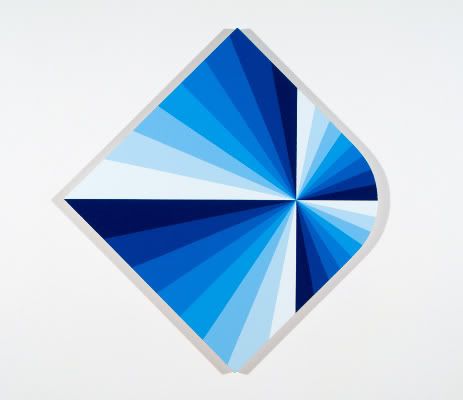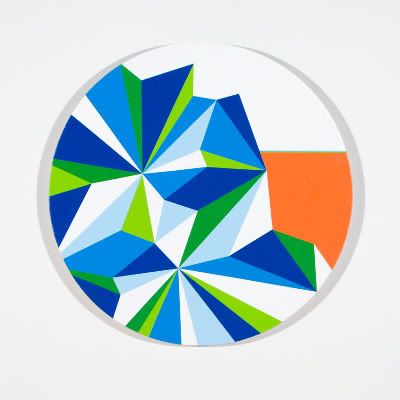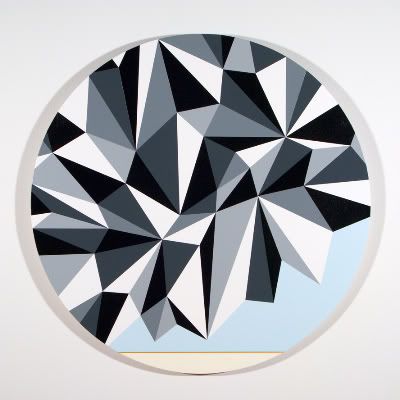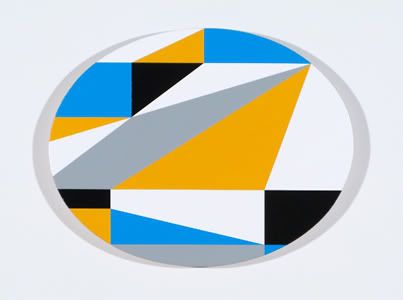One of the challenges for any artist doing geometric abstraction is to avoid boredom. This is an oversimplification, though. Sometimes boredom is the goal--a boredom so thick and profound that it invites the viewer to fill it. Classic minimal pieces have this effect. Michael Fried wrote about this in "Art and Objecthood"--he called this quality "theatricality" and said it was the "negation of art." While I disagree with Fried's formalist puritanism, it is a useful distinction to make. A geometric abstraction by Kandinsky or Mondrian is an aesthetic object--what makes it a work of art is what it looks like, the arrangement of paint on the surface. An Yves Klein monochrome is an object where the relationship the viewer has to it is a major part of the piece--i.e., it is "theatrical." And you get painters like Ellsworth Kelly and Frank Stella who skate on the edge of this distinction. But what would you call a geometric abstraction that is reductive enough to be boring but not interesting as an object? I don't know, but I saw a lot of them at the Aaron Parazette show at McClain Gallery.

Aaron Parazette, Color Key #25, acrylic on linen, 2011
These paintings are called "Color Keys," which is apt. They look like color guides used by commercial designers, or the kinds of exercises student painters do to figure out what happens when you mix 50% ultramarine with 50% titanium white. I did this kind of exercise when I studied painting with Stella Sullivan. It was useful but tedious. And this kind of image has not lost its tedium for me in the intervening 30 years.

Aaron Parazette, Color Key #24, acrylic on linen, 2011
In earlier Parazette paintings, he would take flat areas of color, lay them against another flat area, but separate them by a thin line or barrier in a color that seemed to vibrate between the two others. I quite liked these--he was playing with optical qualities in a subtle and lovely way. He does this on some of the pieces here, and they are the best pieces in the show.

Aaron Parazette, Color Key #23, acrylic on linen, 2011

Aaron Parazette, Color Key #23, acrylic on linen, 2011
What is also pleasing about these pieces is that the area bound by the thin line of color is quite irregular. These area provide a contrast to the triangles that fill the rest of the paintings. These areas of color also create an ambiguous ground, creating a sense of space or depth.
These are the exception. The work here is flat in an uninteresting way. They neither engage the eye or the mind. Most of the paintings in this exhibit occupy the no-man's-land between modernist painting and minimalist object, and that no-man's-land is one boring place to be.

Aaron Parazette, Color Key #21, acrylic on linen, 2011




ooooh, Color Key #23 immediately make me think of this Flash-based piece from artist Rafeal Rozendaal:
ReplyDeletehttp://www.fromthedarkpast.com/
Maybe that could be a new direction for Parazette!
ReplyDelete